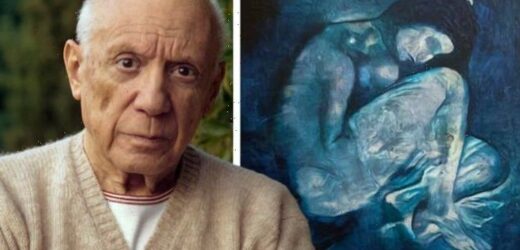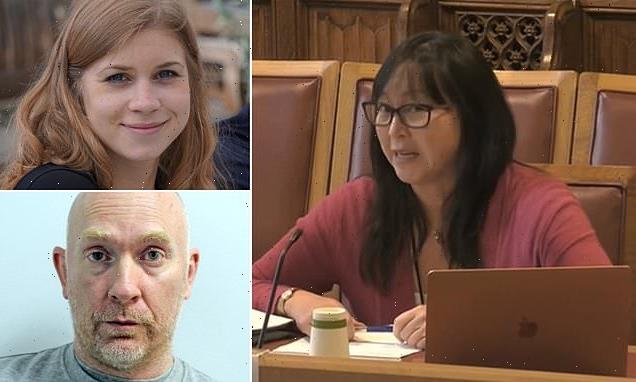The Chase: Spanish art lover gets Picasso question WRONG
We use your sign-up to provide content in ways you’ve consented to and to improve our understanding of you. This may include adverts from us and 3rd parties based on our understanding. You can unsubscribe at any time. More info
Dubbed The Lonesome Crouching Nude, the portrait of a naked, curled up woman was hidden under another painting from Picasso’s famous Blue Period. X-ray fluorescence scans first revealed the painted over portrait in 2010, under the 1903 masterpiece, The Blind Man’s Meal. PhD researchers at University College London (UCL) have now fully recreated the hidden painting using a revolutionary combination of 3D printing and artificial intelligence.
Their effort will be highlighted this month at the inaugural Deep AI festival at the Morf Gallery in London.
According to the experts, the Spanish surrealist may have painted over the woman to save on expensive materials.
Although the Blue Period is often seen as one of Picasso’s most famous artistic periods, he was still fairly poor in 1903 when The Blind Man’s Meal was painted.
Anthony Bourached from the UCL Queen Square Institute of Neurology said: “We believe that Picasso likely painted over this piece with reluctance.
“It was common for his blue period work as it was early in his career and materials were expensive.


“Furthermore, its appearance in the background of one of his most famous blue period pieces, La Vie, indicates that was it likely significant to him.”
The naked woman’s portrait can be seen in the background of La Vie as one of two unfinished canvases, standing behind a woman embracing a man and a mother holding a child.
La Vie hangs today in the Cleveland Museum of Art in the US and The Blind Man’s Meal hangs in the Metropolitan Museum in New York.
The portrait was first exposed using spectroscopic imaging, which allowed the researchers to reveal the hidden underpainting.
The image was then processed to separate its various parts.

A neural network then analysed a collection of Picasso paintings to help process the portrait into what Picasso may have intended for it to look like.
The researchers then generated a heightmap that gave the art texture and allowed for it to be 3D-printed.
The last step of the process involved recreating the art on a canvas with a 3D printer, to the exact specifications and measurements of the original painting.
This was the third painting the UCL researchers recreated using the novel technique.


George Cann from the department of Space and Climate Physics at UCL said: “I hope that Picasso would be happy in knowing the treasure he’s hidden for future generations is finally being revealed, 48 years after his death and 118 years after the painting was concealed.
“I also hope that the woman within the portrait would be happy in knowing that she hadn’t been erased from history and that her beauty was finally being revealed in the 21st century.
“At the time that Picasso painted The Lonesome Crouching Nude and The Blind Man’s Meal he was poor and artist materials were expensive, so he likely painted over the former work with reluctance.
“The fact that the woman within The Lonesome Crouching Nude is also within La Vie and a few of Picasso’s sketches suggests that Picasso may have had an affinity towards this woman.”
He added: “It’s very exciting to see a work that’s been locked up.
“It’s quite eerie seeing brushstrokes, the colour and the way in which light reflects off the work. It’s a beautiful piece.”
Born in 1881 in Malaga, Spain, Picasso went on to become one of the world’s greatest painters and sculptors, who championed the cubist and surrealist movements.
Picasso died in 1973 in France at the age of 91.
His hidden work, The Lonesome Crouching Nude, will be unveiled at the More Gallery in Shoreditch, London, on Wednesday.
Source: Read Full Article


